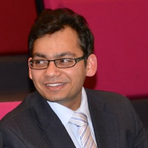 In this thesis adaptive optofluidic lens devices with aberration control were fabricated and characterized. ‘The image captured by lenses is sometimes blur and not up-to-date,’ Kartikeya Mishra says. ‘To address this problem was the main drive behind this PhD research. One of the great advantages using fluid lenses, compared to (fixed) solid lenses, is their flexibility. Changing its shape while working, optical aberrations can be corrected for.’
In this thesis adaptive optofluidic lens devices with aberration control were fabricated and characterized. ‘The image captured by lenses is sometimes blur and not up-to-date,’ Kartikeya Mishra says. ‘To address this problem was the main drive behind this PhD research. One of the great advantages using fluid lenses, compared to (fixed) solid lenses, is their flexibility. Changing its shape while working, optical aberrations can be corrected for.’
Kartikeya found good reasons to use electric fields as a driving stimulus for liquid lenses. Various mechanisms to tune the shape of liquid-liquid interfaces were classified; wavefront characterization methods of these lenses were discussed.
Kartikeya: ‘Most of my work was experimental in nature. For example we demonstrated that a liquid-liquid interface can be electrostatically modulated into a tunable and adaptive fluidic aspherical lens. This is done by applying an electric field to a drop entrapped in an aperture. I further corroborated my experimental findings by carrying out optical simulations on Zemax.’
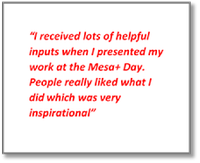
Further a robust, portable and compact fluid lens device was designed and fabricated. Also the fabrication and working of an optofluidic lens device was described in which the zero voltage curvature was controlled by electrowetting rather than by hydrostatic pressure. This control behavior was proven to be reversible as the voltage was tuned up and down.
Market
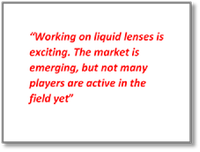
‘Working on liquid lenses is exciting,’ Kartikeya says. ‘The market for them is emerging, but not many players are active in the field yet, Varioptics (France, Lyon) being one of the main manufacturers. Really being able to improve our wavefront characterization methods for the electrowetting driven lens, was a special moment during my PhD project. We succeeded in completing a paper on this novel subject for which the stakes were really high. Also the chapters 2 (mainly review work) and 4 and 5 led to good publications. Chapter 6 and 7 are under preparation and soon will be published.’
Collaboration
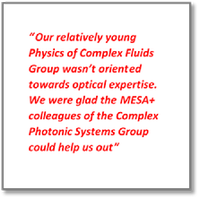
As member of the Physics of Complex Fluids Group, Kartikeya collaborated with the Mesa+ Complex Photonic Systems (COPS) Group. ‘As our relatively young group wasn’t oriented towards optical expertise, we were glad the COPS experts could help us out on that. Also I learned a lot on wavefront characterization, from Professor Hans Zappe. His showing me around at Freiburg University was great. I learned a lot about new experimental techniques, in just one day’s time.’
Better feel
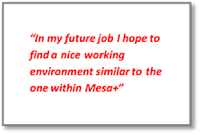
Kartikeya mentions his four years of PhD work considerably improved his scientific precision. ‘Within the field of research of fluid lenses, I gained a far better feel of numerical values. I now know that when working within the right range of values this will lead to better results. Also my attention for details has grown. It allows me to go much deeper into studying the phenomena crucial in the field.’
Opportunities
If his future job will be in academics or in industry, 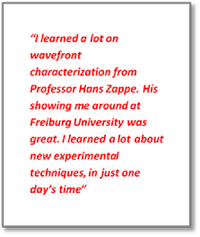 Kartikeya is not sure about yet. ‘I am open, looking for good opportunities in both worlds. When looking for jobs in industry, I hope to find some interesting research elements within its descriptions. This will keep me fresh, not drowning too much into monotonous work. In my future job I hope to find a nice working environment similar to the one within Mesa+. All colleagues here are really open for collaboration, sharing knowledge and research skills. For example, I received lots of helpful inputs when I presented my work at the Mesa+ Day. People really liked what I did which was very inspirational.’
Kartikeya is not sure about yet. ‘I am open, looking for good opportunities in both worlds. When looking for jobs in industry, I hope to find some interesting research elements within its descriptions. This will keep me fresh, not drowning too much into monotonous work. In my future job I hope to find a nice working environment similar to the one within Mesa+. All colleagues here are really open for collaboration, sharing knowledge and research skills. For example, I received lots of helpful inputs when I presented my work at the Mesa+ Day. People really liked what I did which was very inspirational.’
